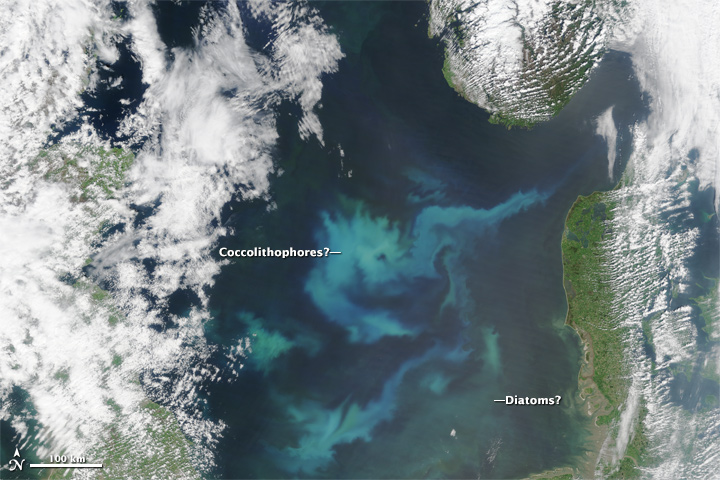
NASA Earth Observatory images by Jesse Allen, using data from the Level 1 and Atmospheres Active Distribution System (LAADS). Caption by Rachel Carlowicz with Mike Carlowicz. Interpretation insight provided by Mike Behrenfeld, Oregon State University, and Jochen Wollschläger, Helmholtz-Zentrum Geesthacht.
Despite its cold waters and harsh winds, the North Sea is a fertile basin for phytoplankton blooms. The drifting, plantlike organisms tend to be most abundant in late spring and early summer due to high levels of nutrients in the water and increasing sunlight. The intense winds blowing over the relatively shallow North Sea causes a lot of vertical and horizontal mixing that brings nutrients to the surface, as does runoff from European rivers.
The first image, acquired on June 6, 2015, by the Moderate Resolution Imaging Spectroradiometer (MODIS) on NASA’s Terra satellite, shows a mass of phytoplankton blooming between Denmark, the United Kingdom, and Germany. The milky, light-colored surface waters are likely filled with coccolithophores, whereas the greener areas are probably rich with diatoms or perhaps dinoflagellates. (It is impossible to know for sure without water samples.) Read more

